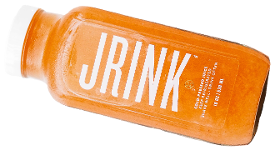Coca-Cola
San Francisco Sues Over Ultra-Processed Foods
In a lawsuit filed by San Francisco, around 10 large food and beverage companies are accused of deceptive marketing relating to ultra-processed snacks and drinks, arguing that these and other manufacturers have long known that such products could contribute to health problems but continued marketing them to children. Companies including Coca-Cola, PepsiCo, Nestlé and Mars Inc., could face a decision forcing them to restrict marketing practices rather than outright bans. The Consumer Brands Association argues that no universal scientific definition of UPFs exists.
Coca-Cola Vietnam Loses Tax Appeal
A Ho Chi Minh City court rejected Coca-Cola Vietnam’s lawsuit against the national tax authority, confirming that the company must pay more than VND821 billion (about US$30 million) in penalties and back taxes. The ruling follows a multi-year inspection that reviewed expenses, transfer pricing concerns and reported losses from 2007 to 2015. Authorities determined that raw material costs from the parent company were unusually high and required profit adjustments. Coca-Cola Vietnam said it respects the ruling and will consider next steps while continuing to meet legal obligations.
Coca-Cola Brings Back Diet Cherry Coke
Coca-Cola will permanently bring back Diet Cherry Coke to US shelves early next year after years of intermittent availability. Research shows strong nostalgic demand for discontinued flavors, encouraging Coca-Cola to bring back the drink in 20-ounce bottles and 12-packs across all retailers. The move aligns with broader industry interest in classic flavors and brand revivals.
Keurig Dr Pepper
RC Cola Seeks A Nostalgic Revival
Keurig Dr Pepper is relaunching RC Cola after decades of limited availability, aiming to tap into renewed interest in classic cola flavors. A new marketing campaign, and its first in 40 years, positions RC Cola as a straightforward, affordable alternative in a category crowded with functional and wellness-focused drinks. The brand leans into its long history, from early innovations like the first canned soda to strong regional loyalty in cities such as Chicago. With cola representing nearly half of all soda sales, Keurig Dr Pepper sees growth potential in reintroducing RC Cola to new audiences while keeping packaging and messaging rooted in its heritage.
Monster
Monster Gains New Energy-Drink Customers
Monster Beverage reports record Q3 sales, supported partly by consumers shifting from higher-priced drinks like coffee to energy beverages. Company leaders said more people now view energy drinks as an affordable option, and research in Europe indicates many recent buyers are new to the category. Monster’s Ultra line is seeing strong US growth, and the company plans to release new flavors and a female-focused brand, FLRT, in 2026.
Other Companies
Free AF Enters UK
New Zealand alcohol-free brand Free AF enters the UK market through Morrisons stores and online channels. The range includes RTD alcohol-free cocktails such as Apero Spritz and Spiced Rum & Ginger, with a Margarita available online. 250ml cans are priced at £2.50. Each drink uses a botanical blend called “Afterglow”, designed to provide a warming finish without the need for alcohol. Free AF already sells in major US retailers and continues to grow as demand rises for alcohol-free options that offer flavor and convenience.
Tonino Lamborghini Enters Philippines Market
Velza Global will launch Tonino Lamborghini Energy Drink in the Philippines in early 2026, debuting with two variants, Original and Sugar-Free, in premium matte-black cans, targeting urban consumers seeking luxury-positioned energy beverages. The partnership also supports broader expansion of the Tonino Lamborghini lifestyle brand, including spirits, coffee and future café locations. Velza Global plans nationwide distribution across retail, gyms, hotels and e-commerce, supported by promotional events and brand-building campaigns.
Ukraine Auctions Major Bottled Water Producer
Ukraine opened bidding for IDS Ukraine, the company behind mineral water brands Morshynska and Myrhorodska, after assets were frozen due to sanctions on Russian owner Mikhail Fridman. Ukraine’s government expects the business to contribute significant monthly revenue under new management. The auction includes multiple production and distribution assets listed on the Prozorro public platform.
Wahaha
Wahaha Leadership Shifts Amid Dispute
Wahaha heiress Kelly Zong stepped down as chairwoman and general manager one year after taking over the company founded by her late father, Zong Qinghou, but is keeping her ownership stake. However, ongoing inheritance disputes with three half-siblings led to legal battles in mainland China and Hong Kong. Former legal head Xu Simin is now in charge of the company.
Copyright 2025 Business360, Inc.

